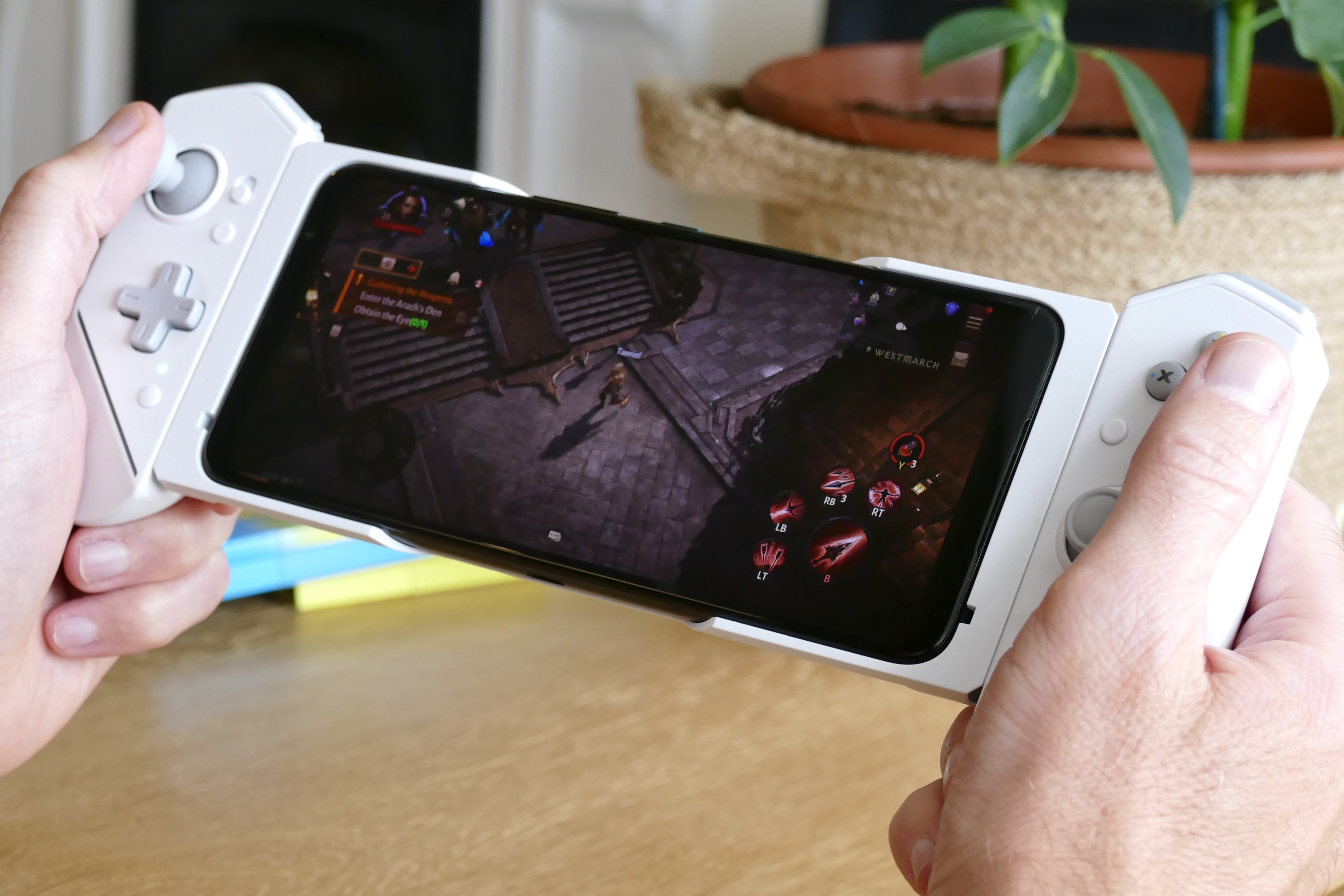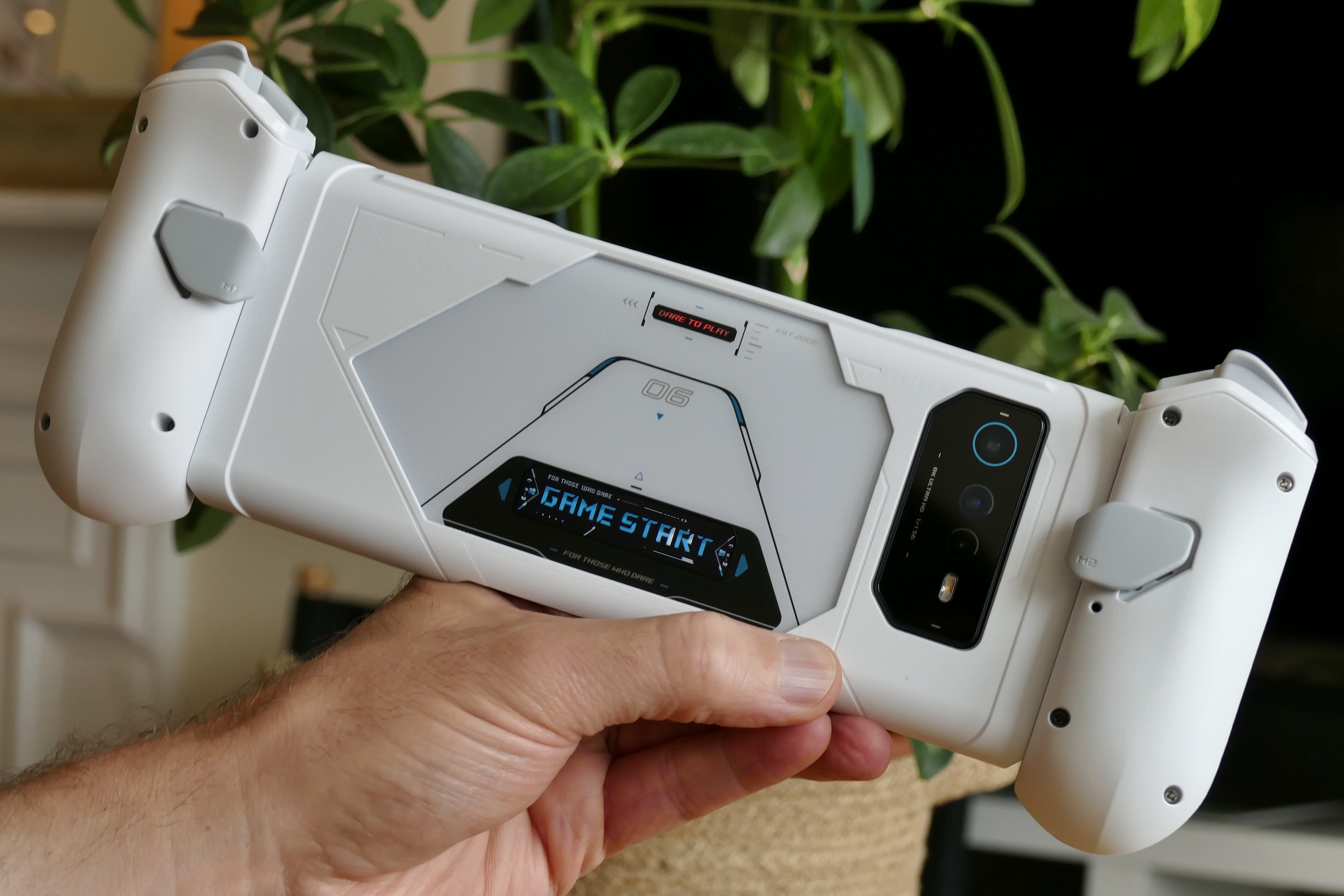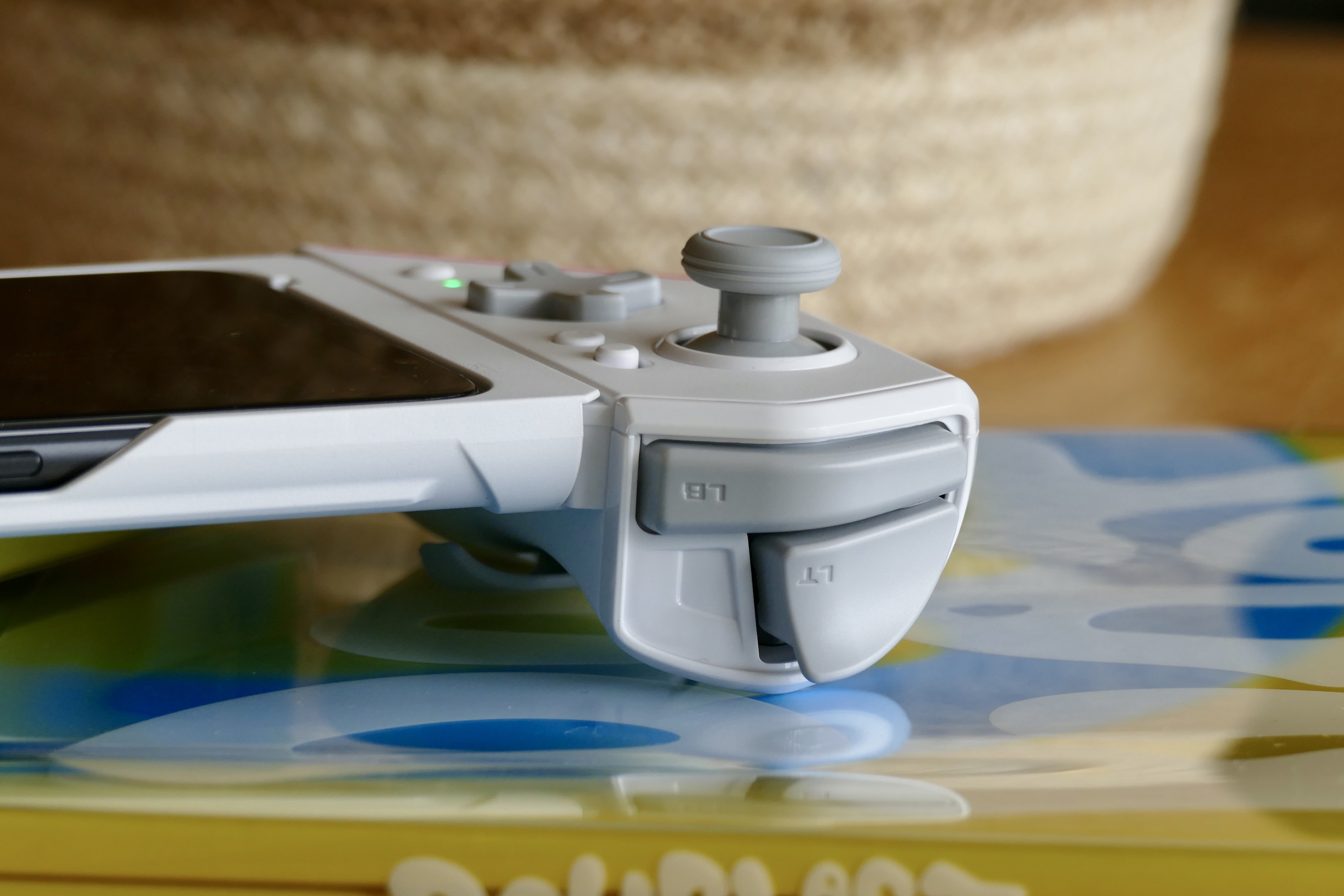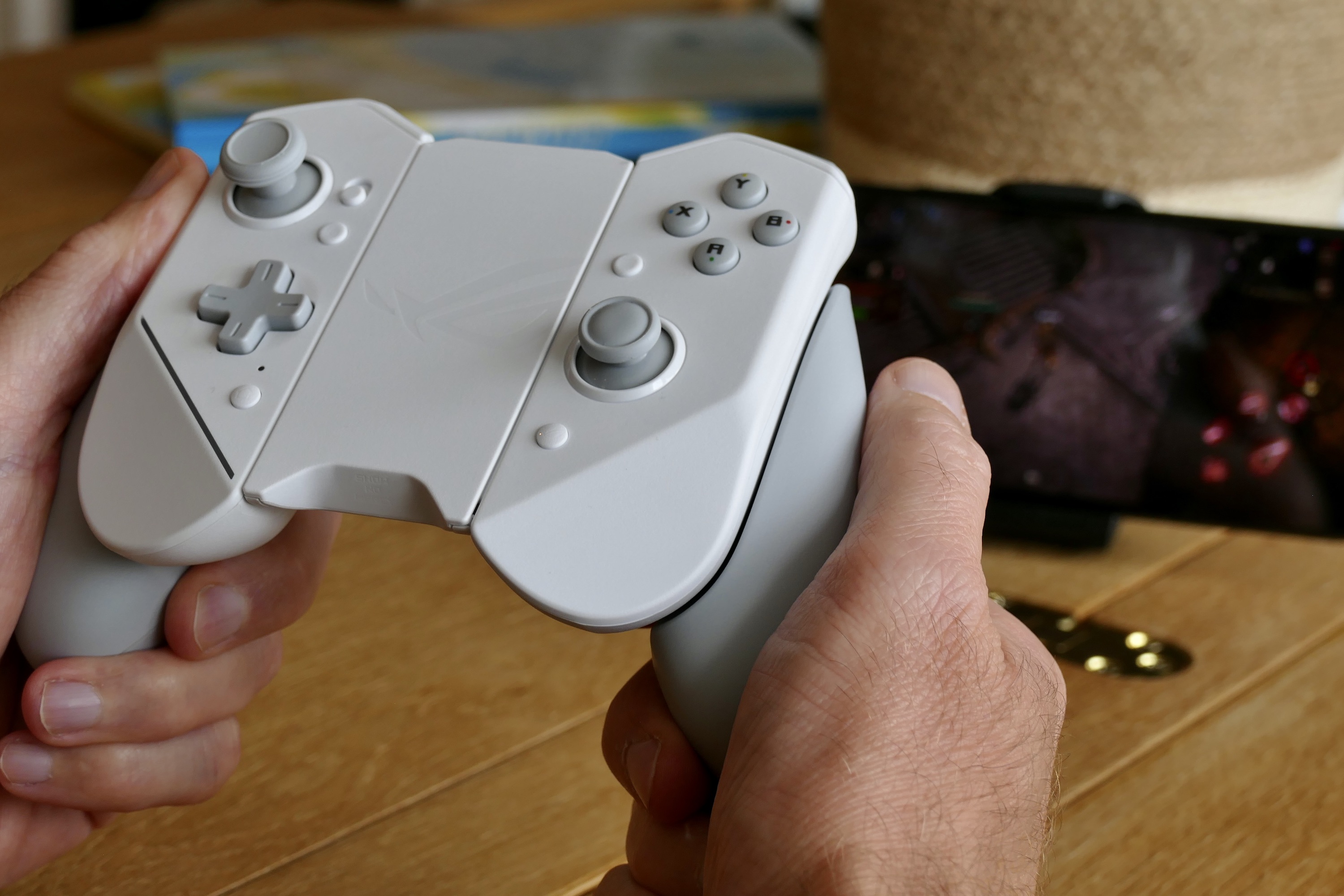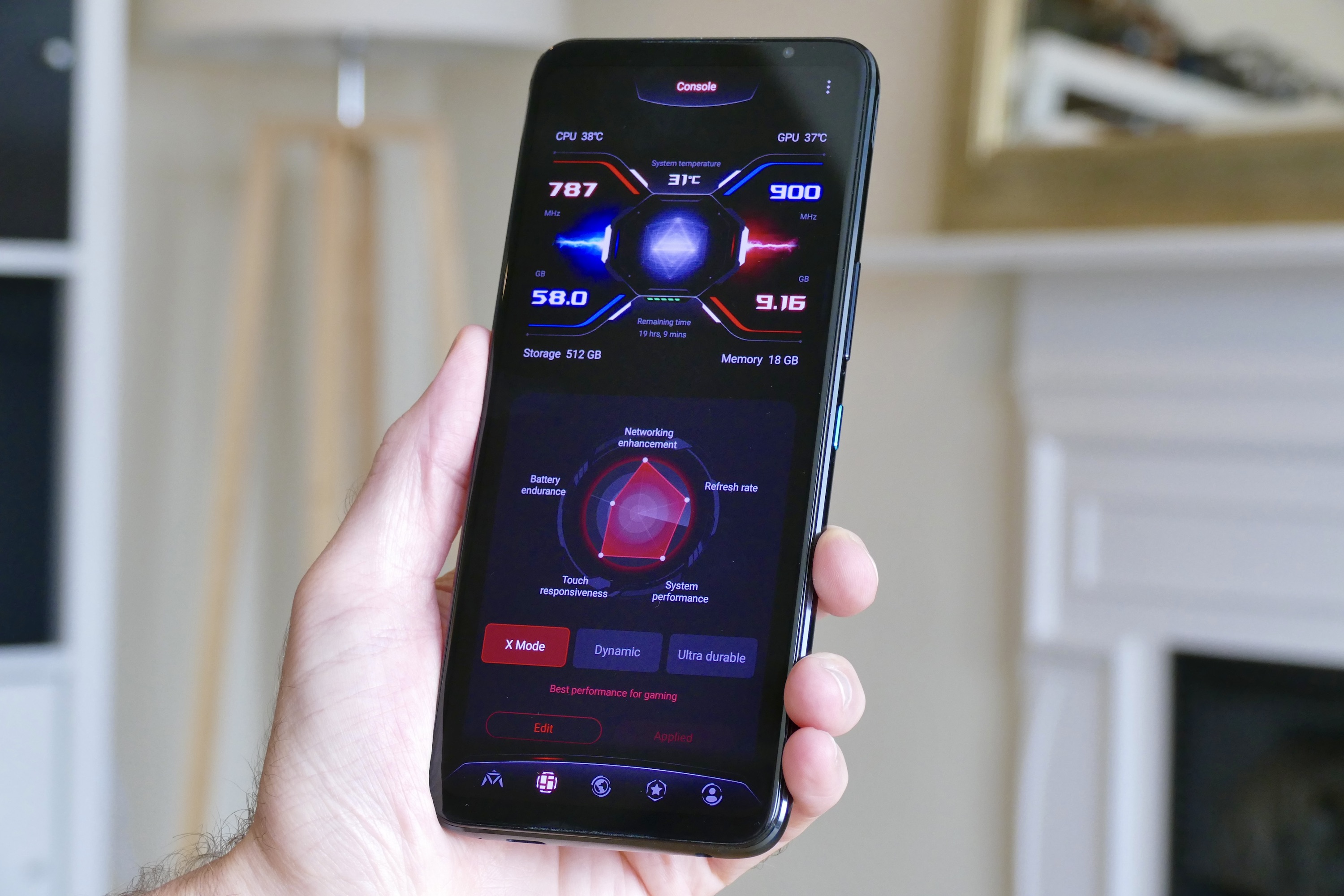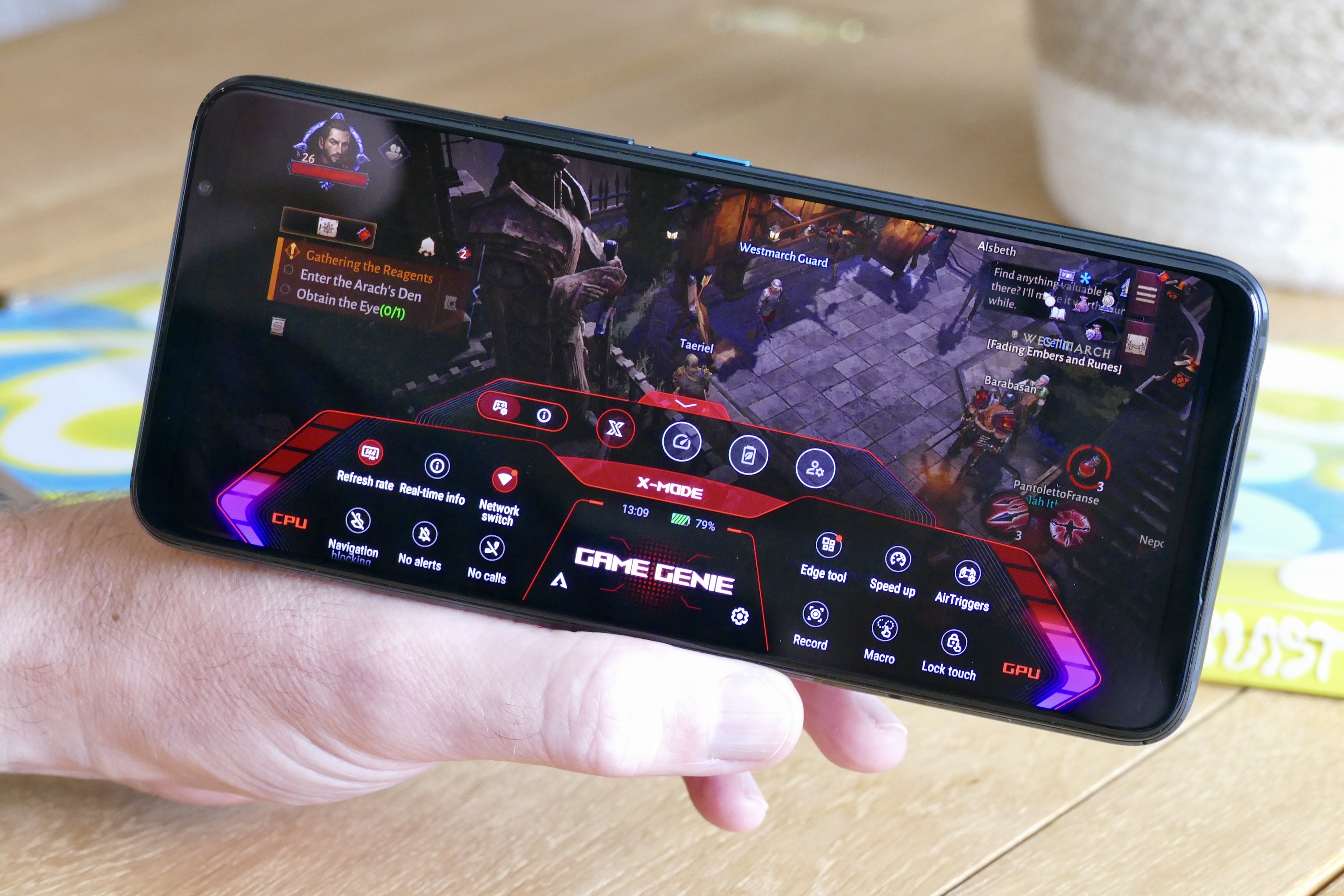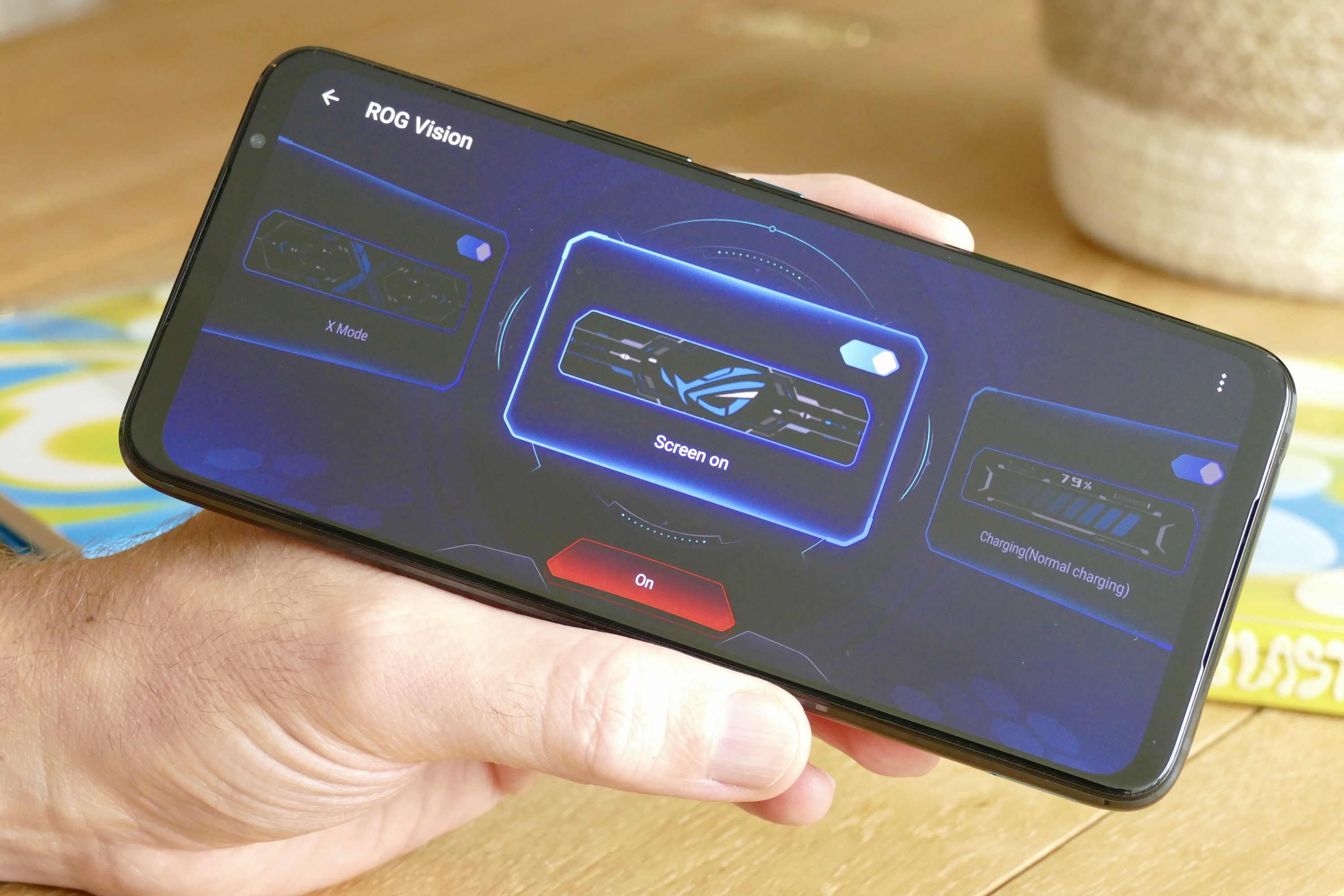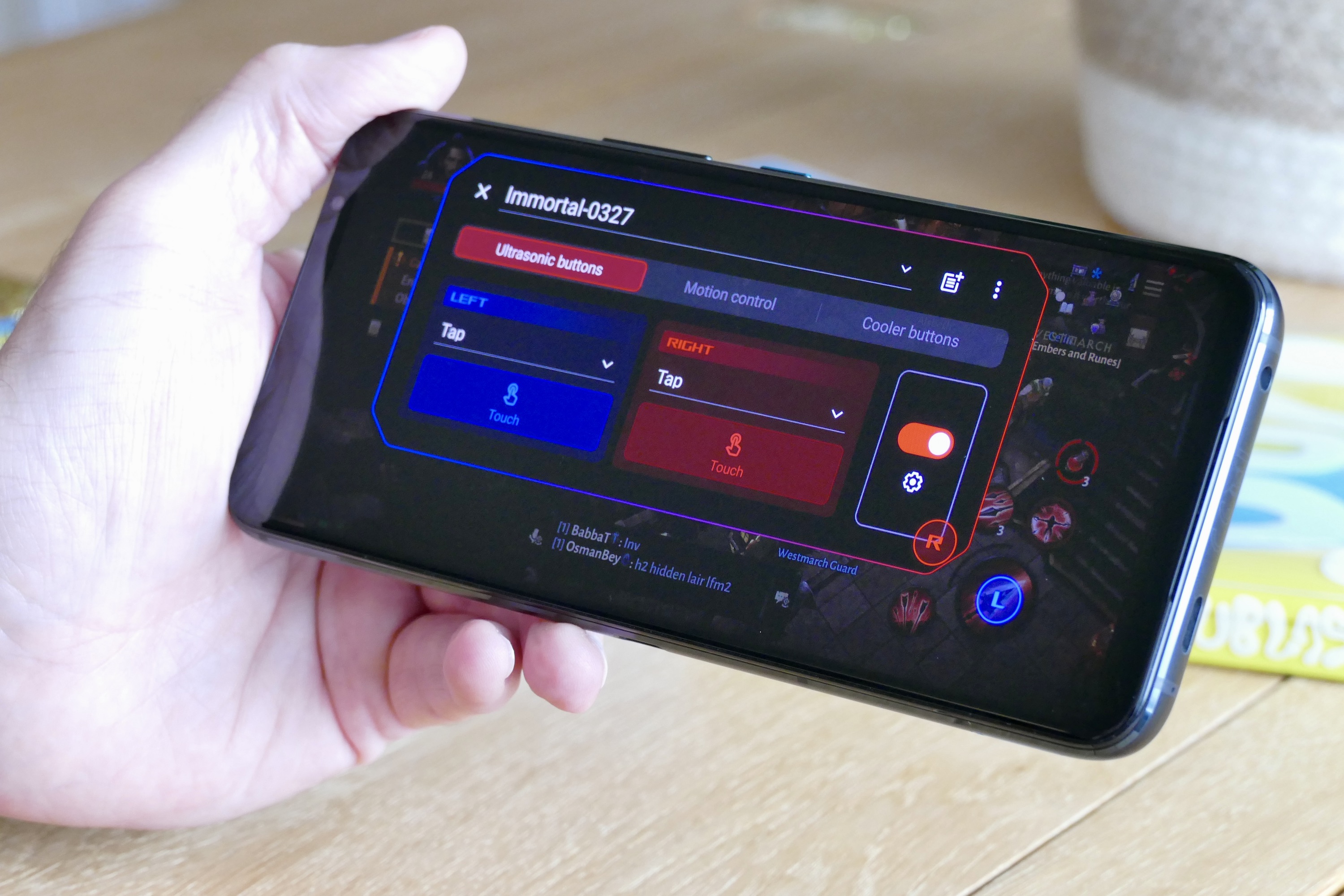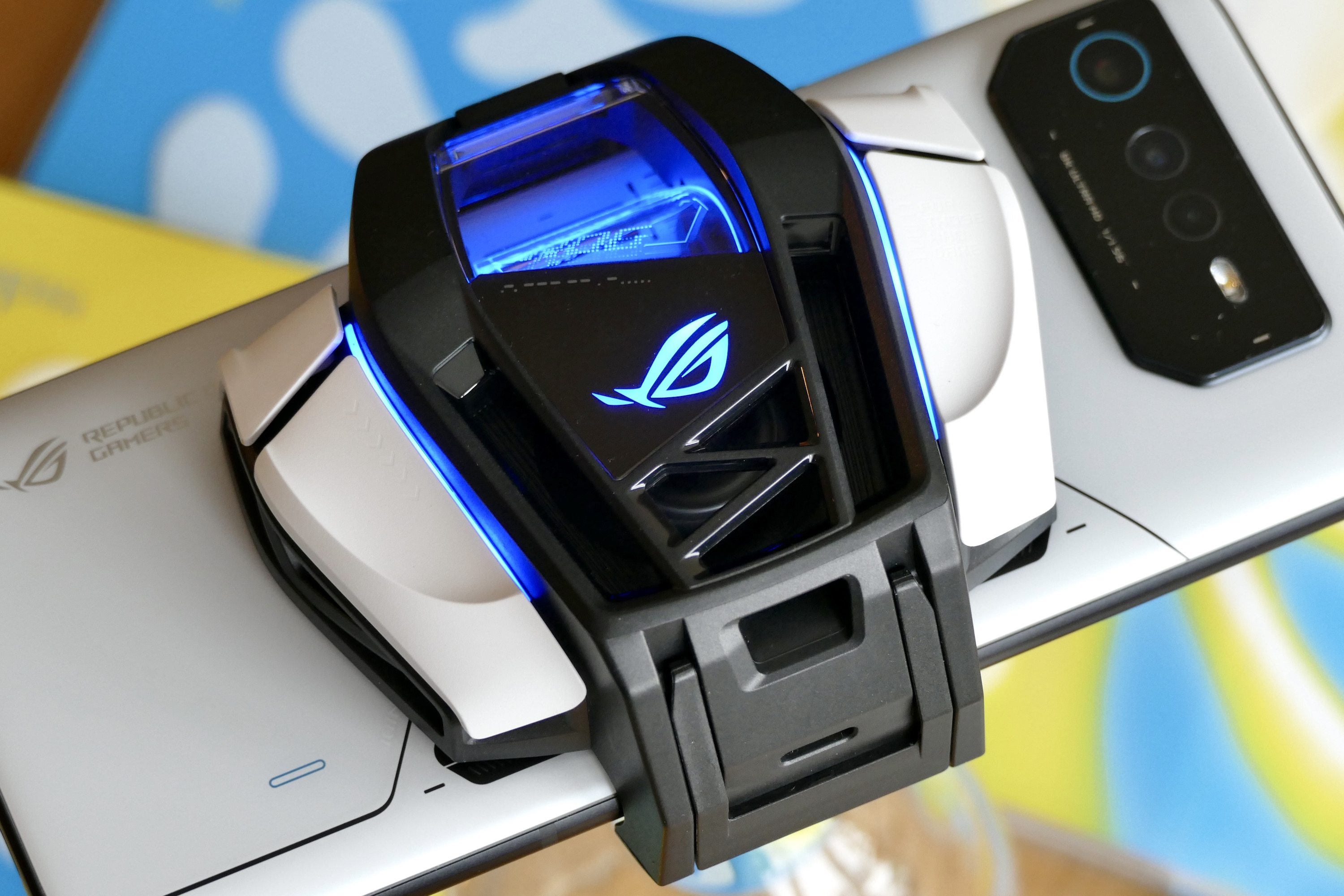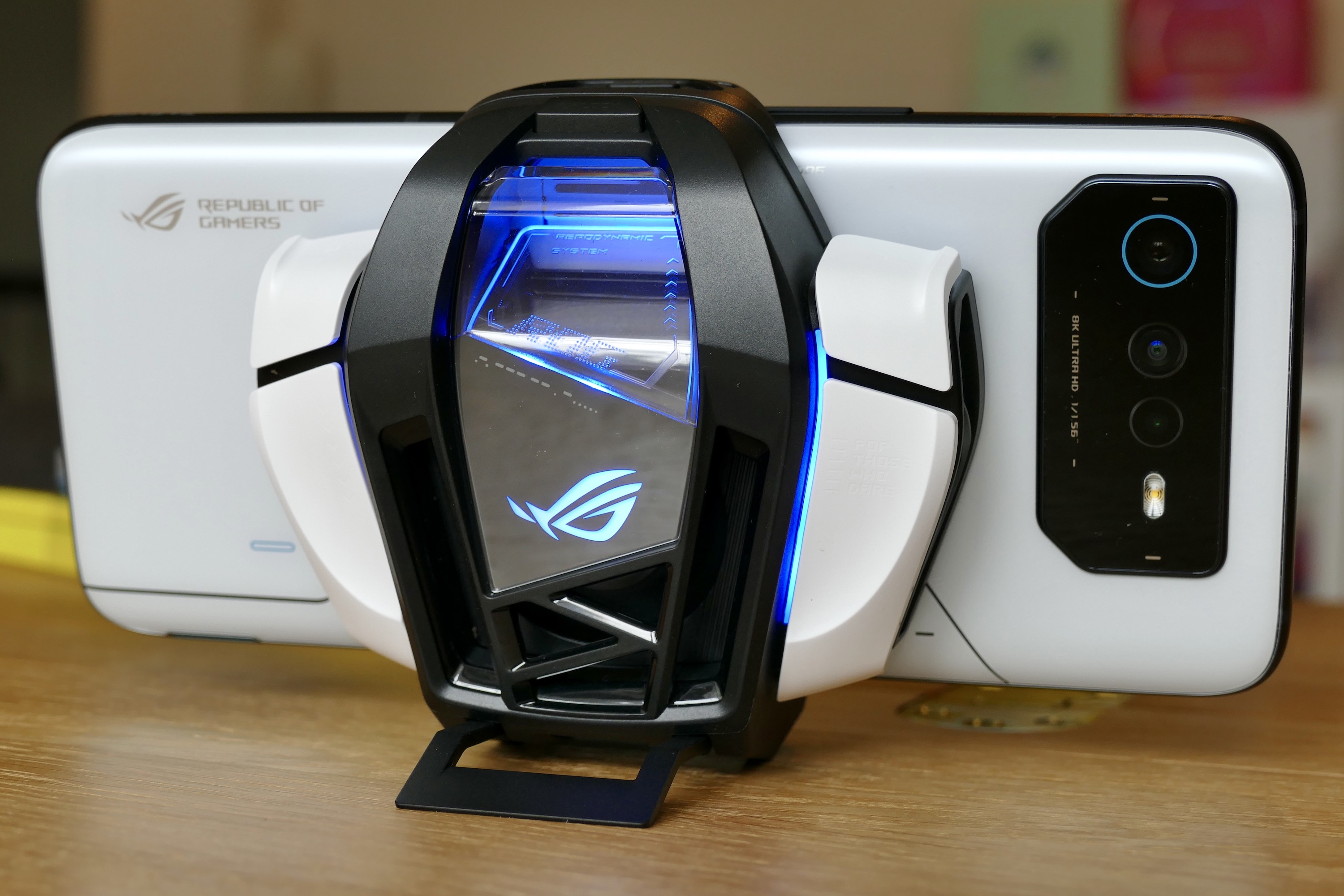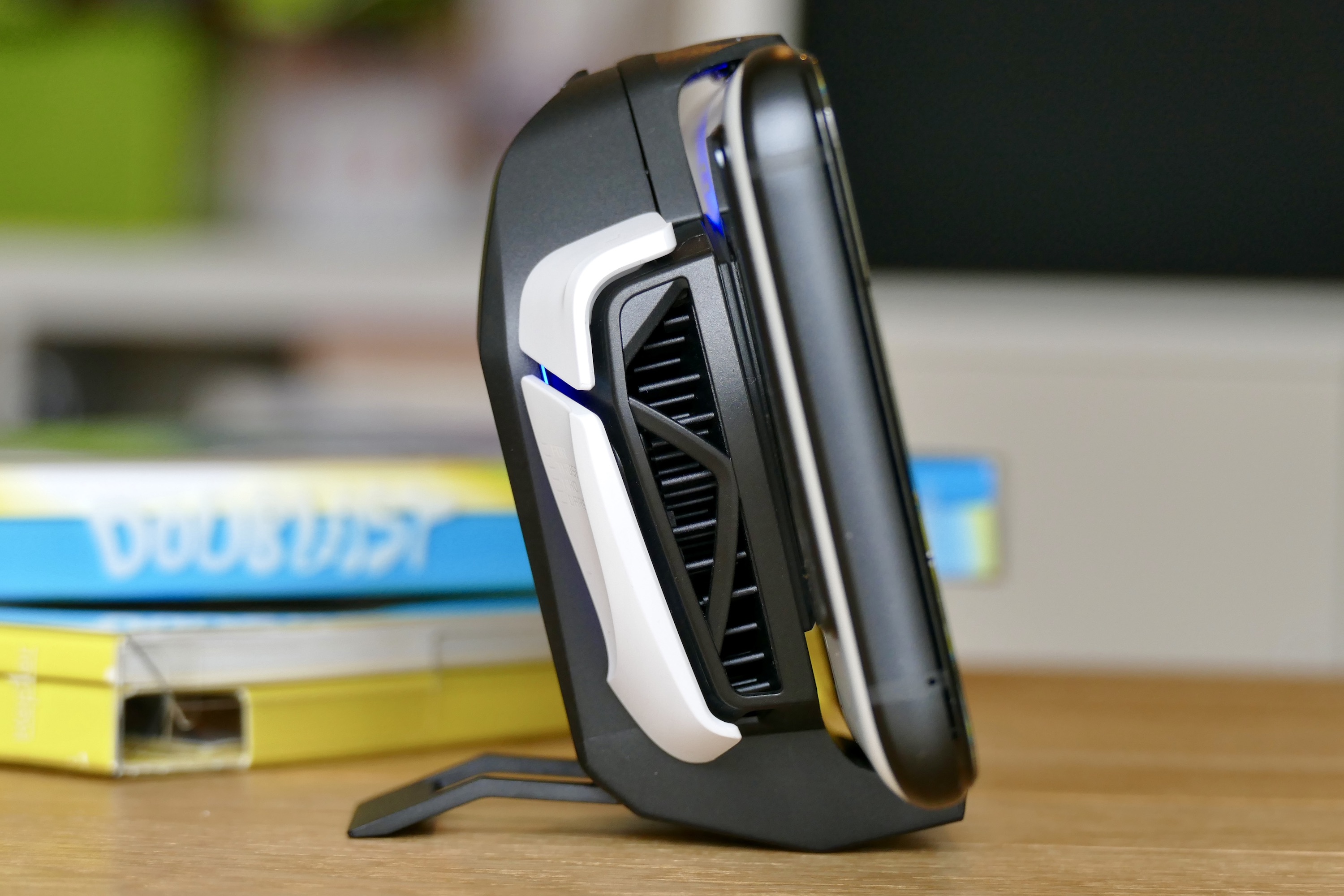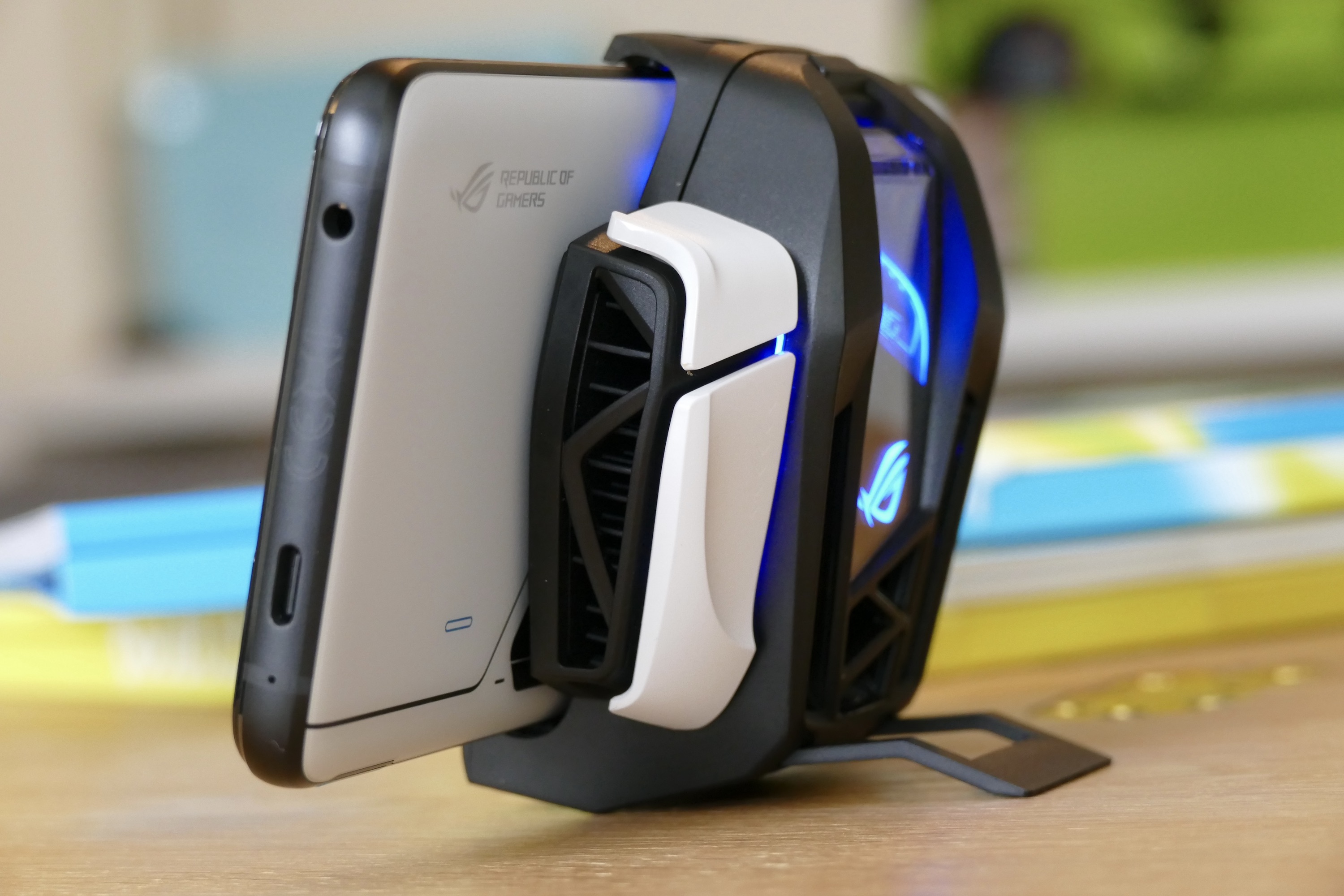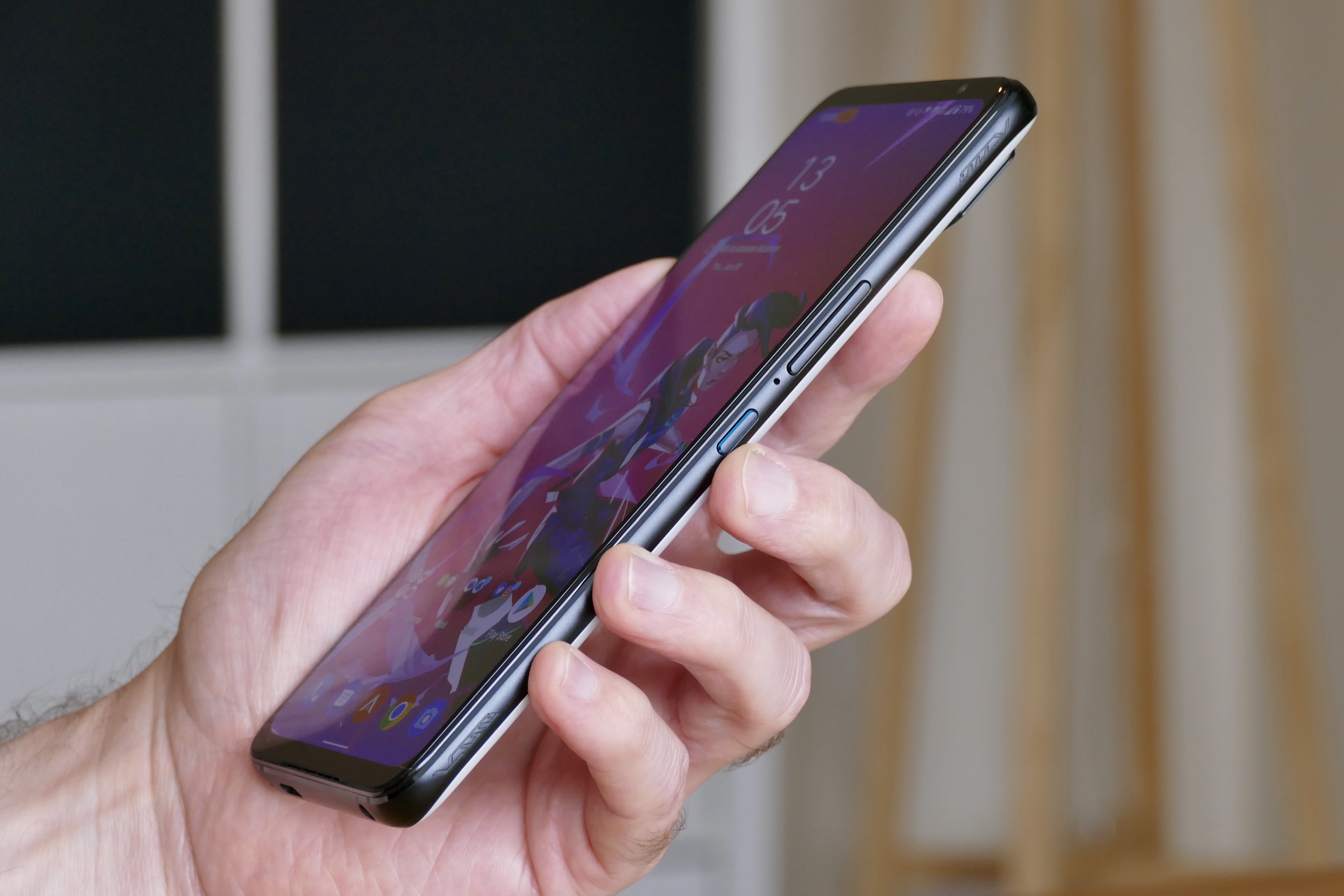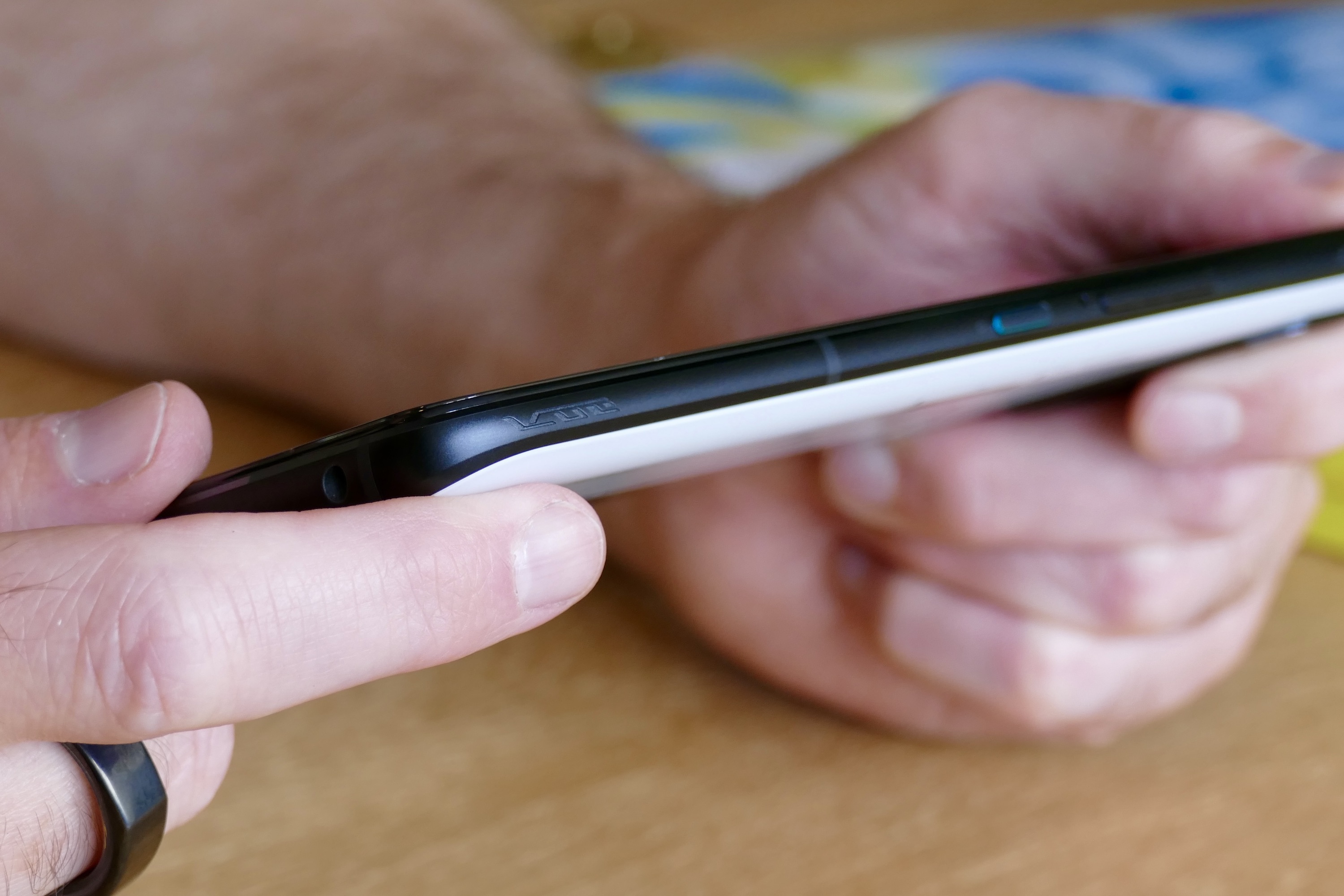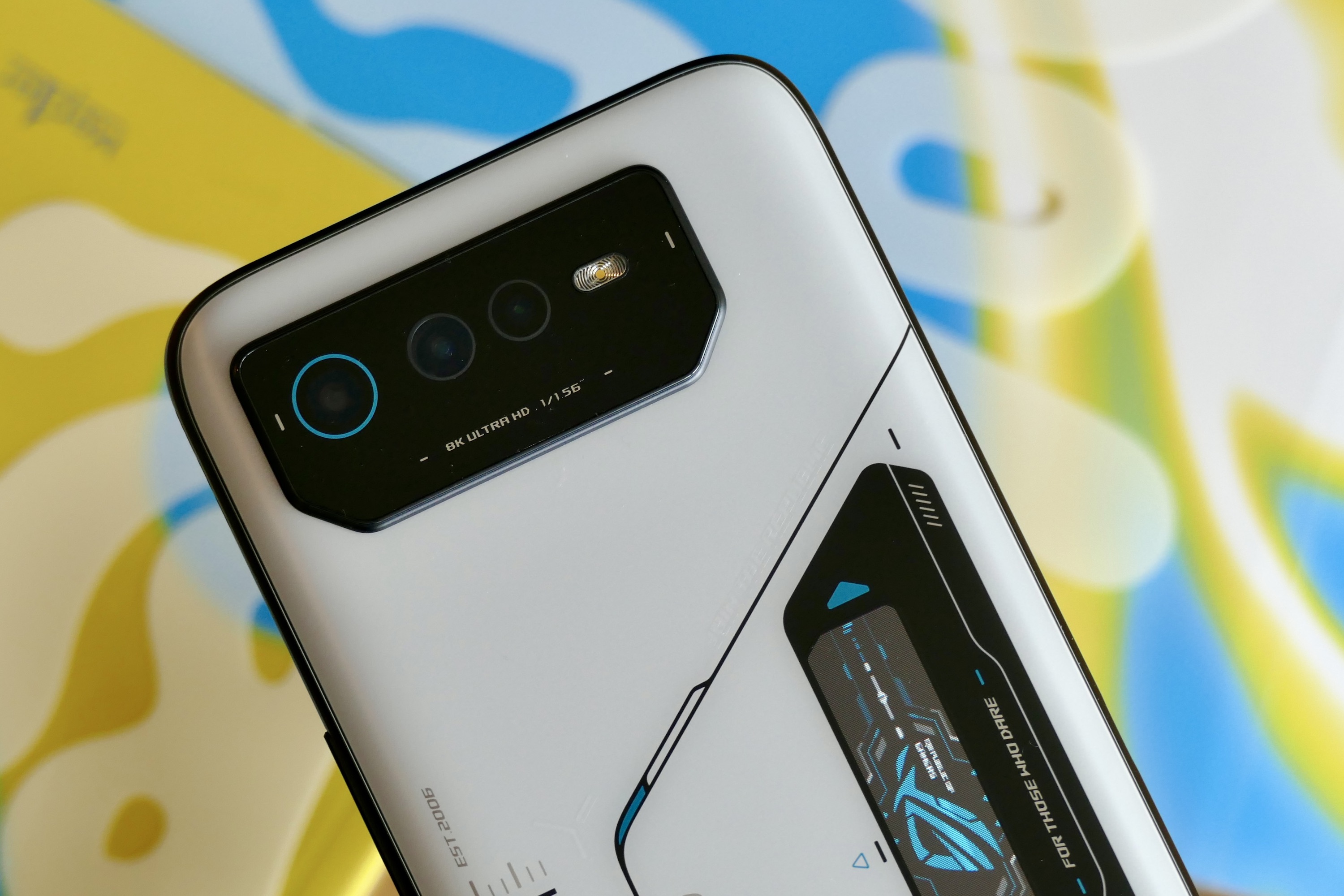Without a doubt, the Asus ROG Phone is the gaming phone grandaddy. It was there before all the pretenders, and still manages to pulverize the competition with its combination of immense performance, well-considered gaming features, cool design, and of course, the Republic of Gamers (ROG) branding.
The ROG Phone 6 is the latest in that lineup, and while we’re still working on the full review, we’ve been playing games on it. A lot of games, actually. After all, the gaming ability is the reason you’ll want the ROG Phone 6, so what has it been like?
What are the specs?
Before we get into the games, let’s talk about the phone itself. There are two versions: the ROG Phone 6 and ROG Phone 6 Pro. For our testing, we’ve been using the Pro variant. There are only a few differences between them, most notably an increase to 18GB of RAM (yes, really) and 512GB of storage space on the ROG Phone 6 Pro. You also get a color OLED “ROG Vision” screen on the back of the phone, rather than a simple color display on the normal ROG Phone 6.
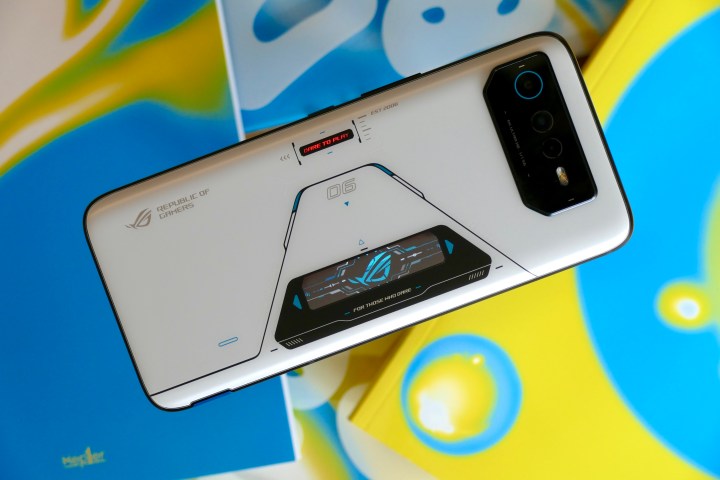
The primary specification is the same. The ROG Phone 6 and 6 Pro both have a Qualcomm Snapdragon 8+ Gen 1 processor, plus a 6.78-inch AMOLED screen (custom-made by Samsung) with a 165Hz refresh rate and an impressive 720Hz touch sampling rate. Inside is a dual-cell 6,000mAh battery, a new cooling system, a new haptic feedback motor, dual speakers with tuning by Dirac, and support for Snapdragon Sound. The camera system uses a 50-megapixel Sony IMX766, plus a wide-angle and a macro lens carried over from the ROG Phone 5.
Asus has engineered in an IPX4 splash resistance rating, a first on the ROG Phone series, and has added 65W fast charging for the battery — taking the massive cell from 0% to 100% in 42 minutes. The AirTrigger shoulder buttons return, this time with nine different gesture control options available. The ROG Phone 6 also has a side-mounted USB-C port to charge the battery, HDMI output, and a range of accessories including a new AeroActive Cooler rear-mounted fan with additional buttons for your games.

Finally, the phone runs Android 12 and Asus has reworked its Armoury Crate game performance optimizer. The Game Genie has new customization options, and the X Mode is back to ensure games get to use all the phone’s performance. Asus promises two major Android updates in the future, and at least two years of security updates.
Gaming on the ROG Phone 6 Pro is a delight
The ROG Phone 6 Pro is a substantial device. It’s at least 10mm thick and it weighs 239 grams, making it heavier and thicker than the Samsung Galaxy S22 Ultra. This means it feels solid and hefty in your hands, and the curved chassis and frosted glass on the back make it comfortable, while the neatly rounded corners never dig into your palms. It’s expertly designed by people who understand how the phone is mostly going to be held, and the side-mounted charging port and forward-facing speakers are further evidence of this.
In one two-hour session, I played an hour of Diablo Immortal and 30 minutes each of Asphalt 9: Legends and Dariusburst. Diablo Immortal plays at 60fps, as does Asphalt 9: Legends. With all the graphics options turned up to maximum, the ROG Phone 6 did become noticeably warm to the touch. Asus has a three-tier cooling system inside the phone with larger graphite sheets than before, a new thermal compound to fill spaces where air would normally get trapped, and a bigger vapor chamber. It all seems to work well, but don’t expect the phone to stay icy cold (at least not without the AeroActive Cooler accessory).
The massive screen is hugely responsive. I came from playing Diablo Immortal on the Samsung Galaxy A53, and the ROG Phone 6 Pro felt like a rocket in all aspects afterward. The screen reacts instantly and there’s practically no slowdown. The visuals are beautiful and it’s undoubtedly a superb phone for playing the game. I used the AirTriggers in the same way as I had on the ROG Phone 5. They make you particularly deadly in Diablo Immortal as you can use more than one weapon at once, and because the AirTriggers have such effective haptic feedback, using them feels like pressing an actual, physical button.
But the real revelation is Asus’s Kunai 3 controller accessory. It looks and works a little like a Nintendo Switch controller, as it can be used wirelessly or attached to a skeleton case for the phone itself. I had problems trying to connect to the phone using Bluetooth, but with the controllers in the case and flanking the screen, they worked without a problem and the games absolutely came alive.
Assigning the keys to on-screen controls is a bit fiddly, but once you’re done, the Kunai 3 controller transforms the way Diablo Immortal plays. There’s no lag, the joystick is precise, and despite the combined weight of the phone, controllers, and the case, it doesn’t become fatiguing. I highly recommended it to anyone serious about games with complex on-screen touch controls like Diablo Immortal.
Playing Daruisburst all the way through caused the phone no problem at all, and Asphalt 9: Legends was super smooth and very fast. Playing any game on a high-spec phone always seems to make them more exciting, because you’re never removed from the action by graphical glitches or frame rate drops.
I switched between the ROG Phone 6’s performance-boosting X Mode and Dynamic mode, which balances performance and battery life, but couldn’t see any obvious differences between the two. The two-hour session took around 20% of the battery, but as I’m less than a week into using the phone, this isn’t necessarily representative of its true capability.
When the ROG Phone 6 Pro reached its peak temperature (which wasn’t uncomfortable but I could definitely feel it against my hands), I tried the new AeroActive Cooler 3 accessory. It’s far larger than the AeroCooler 2, due to it having four physical buttons and a new design with more lights and fins than a custom 50s Chevy. It’s powerful enough that you can feel cool air blowing over your fingers. It’s also massive, and I found it robbed the phone of its ergonomics, making it bulky, heavier, and less balanced. It cools, but its effectiveness comes at a price.
Using the ROG Phone 6 Pro for everything else
This is a big, heavy smartphone with a purpose: To be the best smartphone for gaming. Does that mean it’s rubbish at everything else, or a pain to carry around every day? There’s no doubt the size takes some getting used to. The ROG Phone 6 stretches out even the biggest pocket, and every action requires holding the phone with both hands. I’ve got used to it, but it’s definitely an aspect you’ll have to make peace with to get all the gaming goodies.
The screen is a beauty — fast, colorful, and very bright — and the power delivered by the Snapdragon 8+ Gen 1 is immense. The Android 12 software comes with the choice of using a standard-looking, Pixel-like interface, or Asus’s flashy, sci-fi-inspired interface. Use the “normal” option and it’s clean and simple, while the gaming mode is full of noise and animation. If you like that kind of thing it’s fine, but I’m very thankful there’s the option to ignore it.
Speakers and the sound they produce on a phone is rarely anything more than average, but the ROG Phone 6 Pro is a step beyond. The audio is really great. The phone uses two 12 x 16mm drivers with tuning by Dirac, which Asus also paired with on the ROG Phone 5. It’s vibrant and lively, and the soundstage (yes, there really is one) is carefully managed to provide outstanding stereo separation when you view the phone head-on. There’s even an EQ, a 3.5mm headphone jack, Snapdragon Sound, aptX Adaptive, and Aptx Lossless for a new wave of headphones like the NuraTrue Pro.
I haven’t used the camera much yet, but from what I have seen, it takes decent photos and is shaping up to be a better performer than you may expect. However, it does need some tuning to get the colors right, but consistency between the main and wide-angle camera is actually quite good. You aren’t buying the ROG Phone 6 for the camera, but it’s good to know it’s not a complete letdown.
Now, about that rear OLED screen that Asus calls the ROG Vision. It’s an over-the-top notification light that shows incoming calls, notification icons, charging status, and so on. It’s as gimmicky as gimmicks get, but I don’t actually hate it. It’s exactly the kind of madness I want on a gaming phone.
The gaming king is back
Unquestionably, Asus is going to retain its crown for making the best, most powerful gaming phone you can buy with the ROG Phone 6 or ROG Phone 6 Pro. However, it’s not all that different from the ROG Phone 5. The design is only slightly changed, it now has a basic IPX4 splash resistance rating, and you get the very latest Qualcomm processor. But the rest of the changes are incremental or unseen, like the cooling advancements and the new haptic feedback motor.
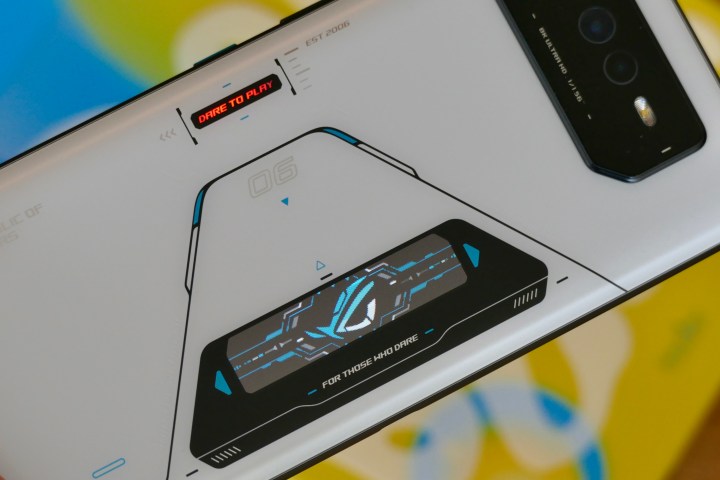
If you own the ROG Phone 5, in particular the Ultimate version, there’s nothing here that should make you rush to upgrade. If you looked at the ROG Phone 5 and decided not to buy it, it’s unlikely the ROG Phone 6 will do anything to change your mind. It’s still a niche smartphone that’s very, very good at one thing in particular — playing games. Provided you also want to play games, right up to doing so seriously or even competitively, you should be considering the ROG Phone 6 or ROG Phone 6 Pro.
Asus hasn’t revealed the price or exact launch date for the ROG Phone 6 series yet. Based on the ROG Phone 5, it may start around $1,000 for the base model and increase from there (in addition to an extra charge for the Kunai 3 gamepad accessory). But even with an expectedly high price tag, the ROG Phone 6 should stand out as the gaming phone to beat in 2022.
